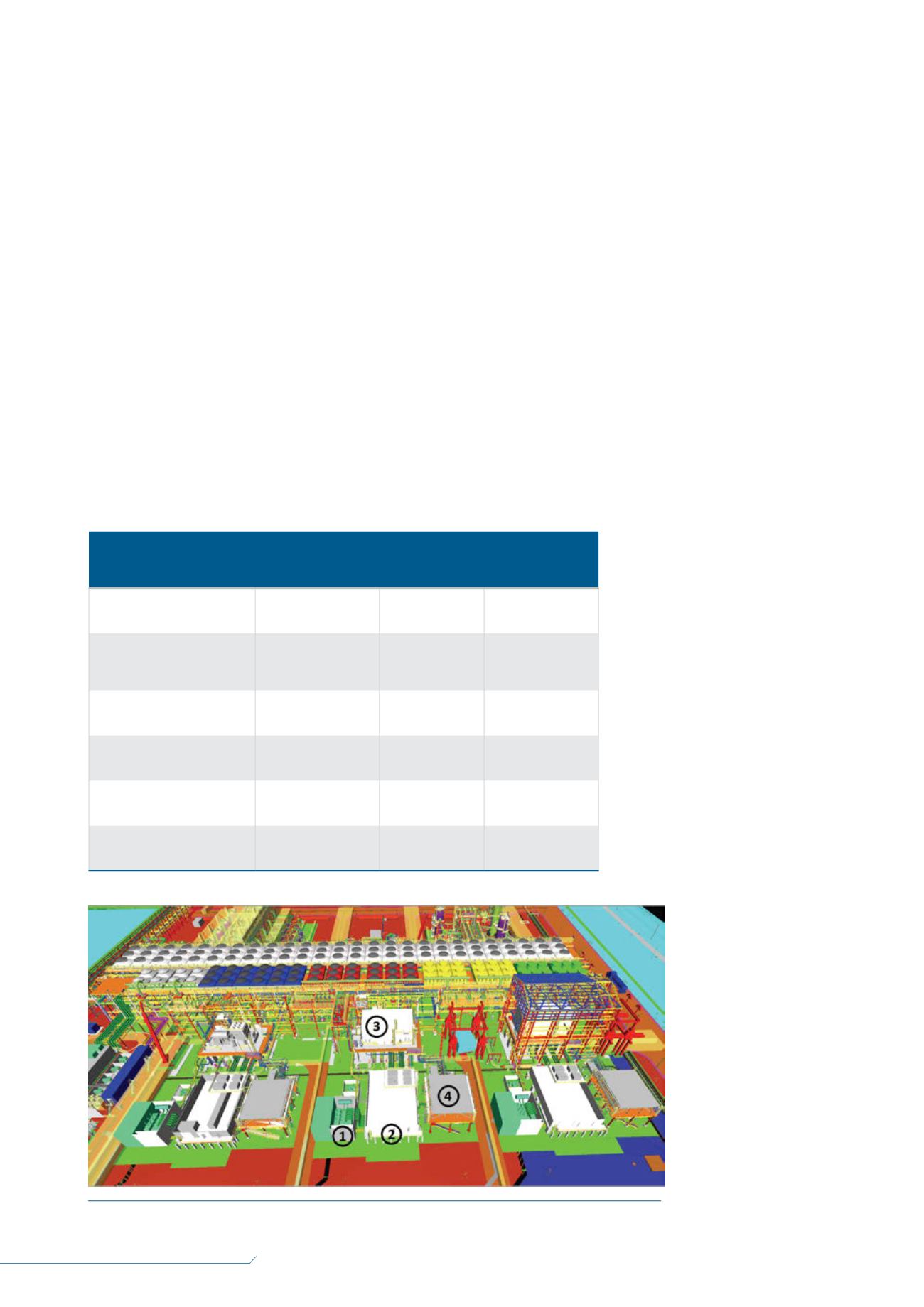
38
LNG
INDUSTRY
APRIL
2016
This article discusses some of the design features of the
all-electric liquefaction facility, focusing on the benefits and
challenges from an operator’s perspective.
Driver selection: maintainability
in focus
In a large scale LNG plant, refrigerant drive power can be provided
by using electric motors, gas turbines or steam turbines.
The electric motor driver option selected by Freeport LNG is
efficient, reliable, simple to operate, and offers a long period
between twomaintenance events, as well as minimum air
emissions. The other inherent advantages of this option are
reduced seasonal fluctuations in power available to the
refrigeration compressors and a higher breakaway torque.
Steam turbine drivers were not considered for the project. On
the gas turbine side, single-cycle industrial gas turbines have low
efficiency, although it is possible to improve their heat rates with
the addition of heat recovery steamgenerators (HRSG). Their
operation would bemore complex and result in higher levels of air
emissions.
The use of aeroderivative gas turbines with higher efficiency
was another viable option. Themain drawback is that their
generated power decreases with ambient temperature sharply. In
a location that has hot summers, such as the US Gulf Coast,
power reduction will negatively impact LNG production. Options
for augmenting aeroderivative power with air inlet cooling
systems to achieve a relatively flat power profile increases
operational complexity, and augmented horsepower is expensive.
Typical data for comparing industrial gas turbines, aeroderivative
gas turbines andmotors with load-commutated inverter (LCI)
drive are shown in Table 1.
Lifecycle cost
The CAPEX for an electrically-driven LNG plant would be higher
than for a gas turbine driven facility. This is mainly because of
the cost associated with power generation equipment, but the
Freeport LNG project has decided to import 90%of its required
power from sources outside of the plant boundary. Importing
most of the required power helped tomanage project CAPEX
significantly.
Electric drivers can savemillions of dollars in annual OPEX by
cutting fuel gas, providing higher availability and reducing carbon
taxes. In a typical three-train 15million tpy gas liquefaction facility,
with the assumption of 200MWof power required per train, gas
turbines would consume enough natural gas to produce over
1 million tpy of LNG. Furthermore, because of fewer outage days
and consistent power levels during hot summers, the
electrically-driven plant will easily produce the equivalent of
10 – 15 days more of LNG per year.
Finally, while carbon taxes are not
assessed at the Freeport LNG facility, if
one assumes that a tax of US$30/t of
CO
2
could be assessed against such a
facility, total tax reduction would
amount to over US$10million/yr.
Reducedmaintenance costs are
another itemon this list. It is estimated
that themaintenance cost of an electric
drive is approximately 30%of the
maintenance cost of a gas turbine drive.
All-electric
liquefaction facility
The overall power requirement for the
three-train liquefaction facility will be
approximately 660MW, which will be
supplied from the public grid system
through two new 138 kV, 4000 A
circuits. A new substation
will be installed adjacent
to the liquefaction facilities
with a four-breaker outdoor
arrangement.
The new substation
will be the primary power
distribution point and will
include gas insulated
switchgear (GIS) of the
two-bus type with the GIS
feeder breakers installed
indoors. Additionally, the
existing power system at
the LNG import terminal
will remain in operation.
Within each LNG train,
one 138 kV circuit will
connect directly to the
Table 1.
Typical data for comparing industrial gas turbines, aeroderivative gas turbines
and motors with LCI drive (data may vary depending on manufacturer and site particular
conditions)
Industrial gas turbine Aeroderivative
gas turbine
Motor with LCI
drive
Number of days down per year
(averaged to cover all minor
and major maintenance plans)
7 – 10
2 – 4 (assume
engines are ready
for swap)
2 – 4
Average driver efficiency
30 – 35%
40 – 42%
94%
High ambient temperature
sensitivty
Power reduces
moderately
Power reduces
sharply
No power reduction
Number of operating hours
before minor maintenance
12 000
4000
24 000
Number of operating hours
before major maintenance
24 000
24 000
48 000
Figure 1.
3D model of the facility showing three compressor strings within one liquefaction unit.


